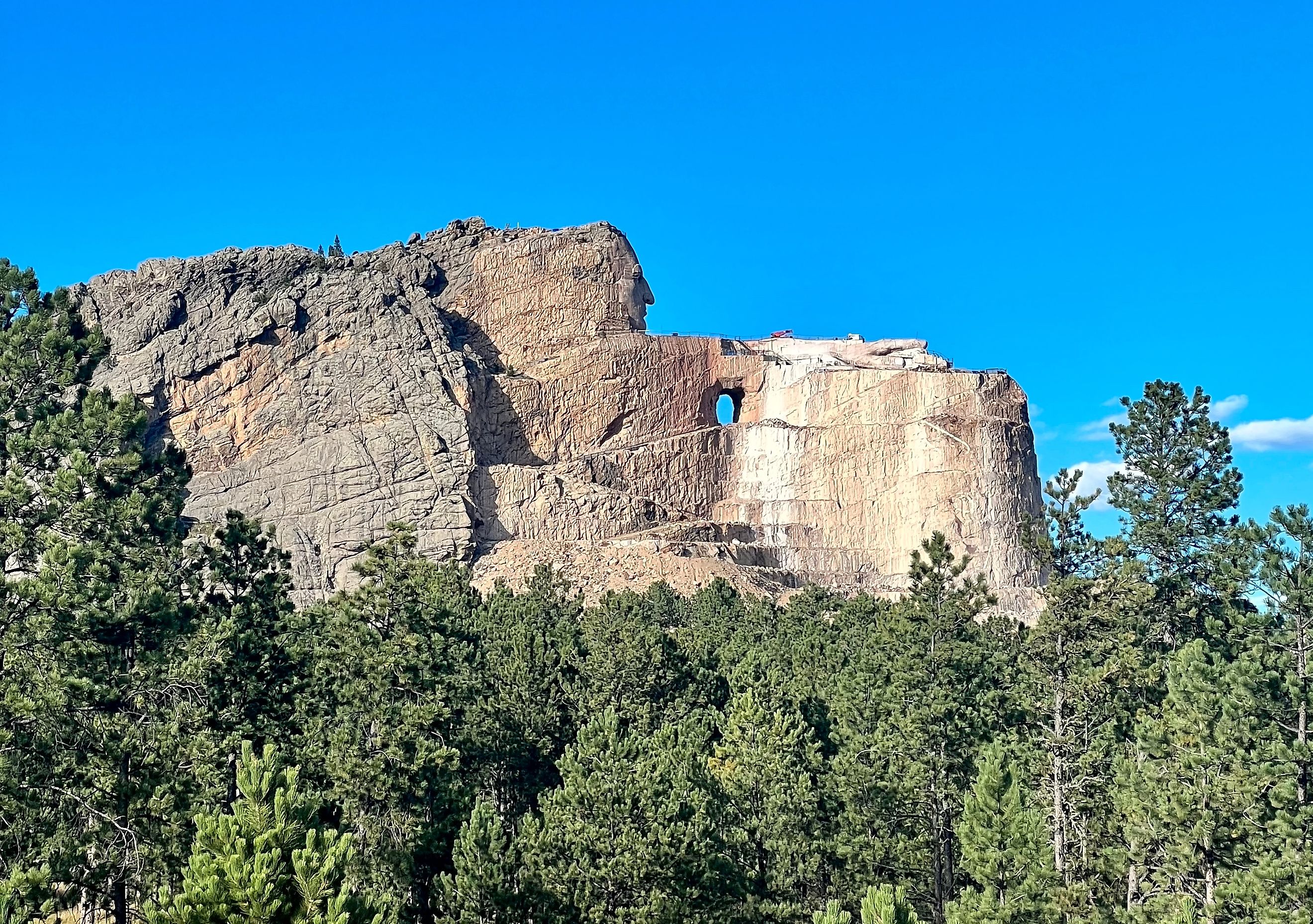
Crazy Horse Memorial
High in the Black Hills of South Dakota, a colossal figure slowly emerges from the granite face of Thunderhead Mountain. It is not a president or a founding father, but a Lakota warrior whose legacy represents resistance, pride, and perseverance. This is the Crazy Horse Memorial, one of the most ambitious sculptural projects in the world. Decades in the making, the mountain carving honors Crazy Horse, an Oglala Lakota leader, and aims to preserve Native American history on a monumental scale.
Who Was Crazy Horse?
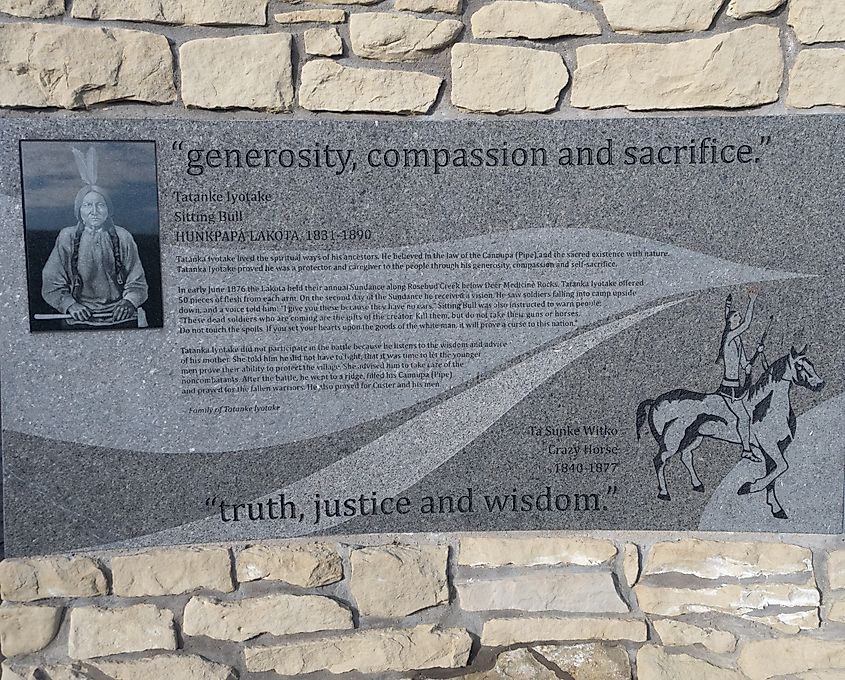
Crazy Horse was a revered warrior and leader of the Oglala Lakota. He is remembered for his fierce commitment to protecting the Lakota people, their land, and their way of life. Unlike other historical figures, Crazy Horse never signed a treaty, never left his homeland willingly, and was known for his quiet strength and moral integrity. His most notable battles include the 1866 Fetterman Fight and the Battle of the Little Bighorn in 1876.
In 1877, Crazy Horse surrendered to US forces and was later killed under controversial circumstances at Camp Robinson in Nebraska. His burial site remains unknown, in keeping with Lakota tradition.
The Vision Behind the Monument
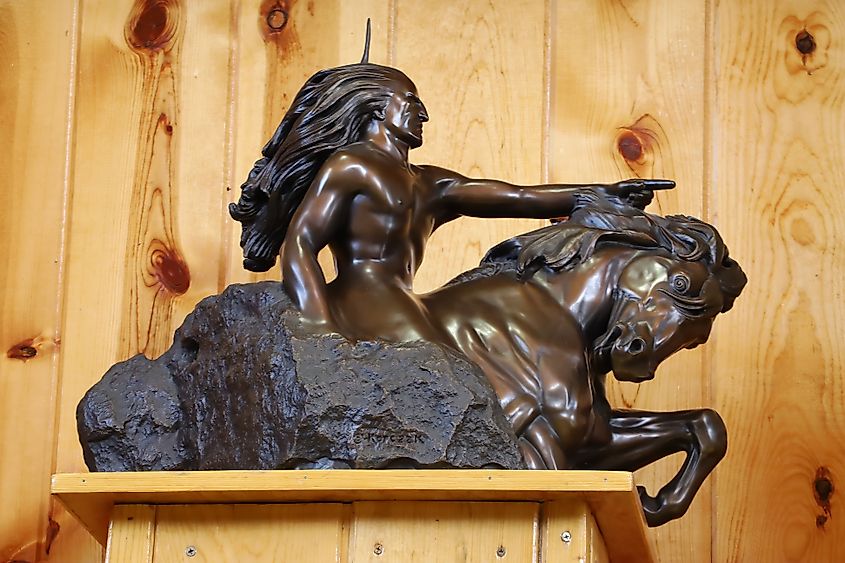
The Crazy Horse Memorial was born out of a desire to honor Native American heroes with the same magnitude granted to US presidents on Mount Rushmore. In the 1930s, Henry Standing Bear, an Oglala Lakota chief and statesman, began campaigning for a monument to Crazy Horse. His mission was simple: to let the world know that Native Americans had great heroes too.
After being ignored by Gutzon Borglum, the sculptor of Mount Rushmore, Standing Bear turned to Polish-American artist Korczak Ziolkowski. A former assistant on the Rushmore project, Ziolkowski was intrigued by the idea. He spent time on the Pine Ridge Reservation learning about Lakota culture and the story of Crazy Horse. Deeply moved, he agreed to take on the project.
In 1948, work began on the sculpture. The first blast was set off on June 3 of that year. Korczak devoted the rest of his life to the memorial, living on site with his wife Ruth and their 10 children.
An Epic Undertaking
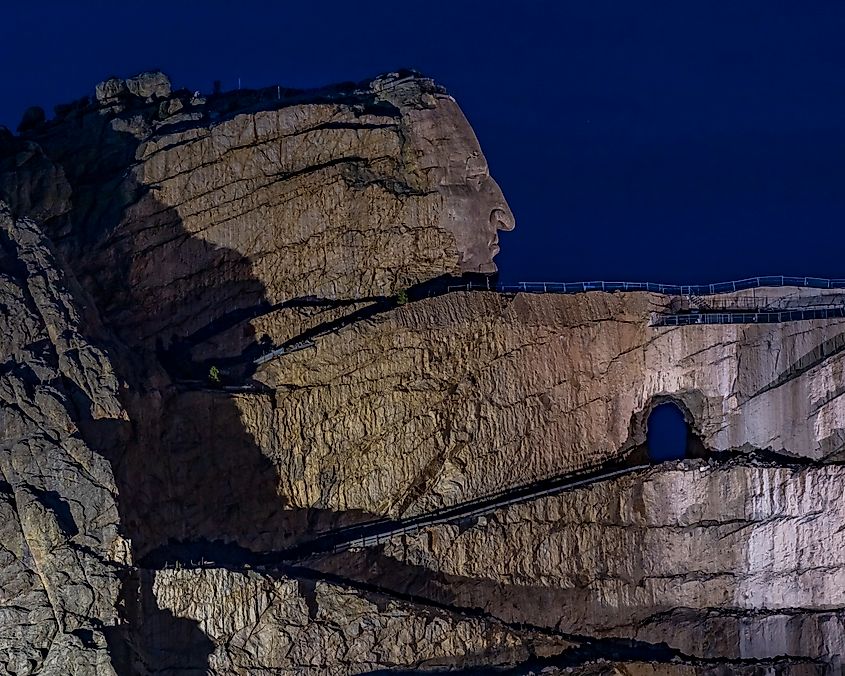
Carving a figure of this size is no easy feat. When complete, the Crazy Horse sculpture will be 641 feet long and 563 feet high. For comparison, Mount Rushmore’s heads stand at just 60 feet tall. The horse’s head alone will be over 200 feet tall, and the outstretched arm will span 263 feet. The sheer scale of the project places it among the largest sculptures in the world.
The face of Crazy Horse was completed in 1998 and measures 87.5 feet high. The left hand, pointing toward the Lakota’s sacred lands, was finished in 2024. Work has since shifted to completing the horse’s head and the rest of the upper body.
Progress Across Generations
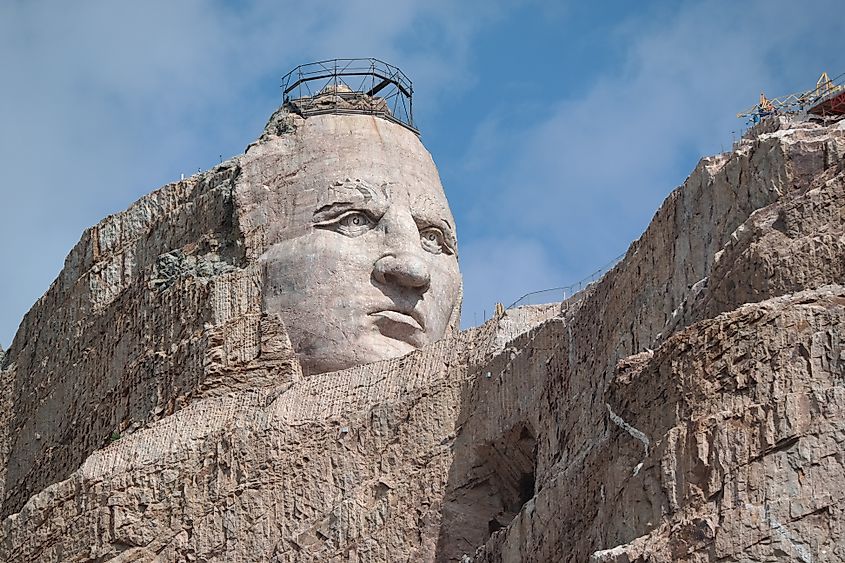
Korczak Ziolkowski passed away in 1982, but the project lived on through the dedication of his wife Ruth. She altered his original plan to focus first on completing the face, believing it would help draw attention and funding.
Ruth managed the Crazy Horse Memorial Foundation and led a team that included several of her children. She passed away in 2014, but the foundation continued under the leadership of her daughter Monique and, more recently, Whitney Rencountre II, the memorial’s first Native American CEO.
Three generations of the Ziolkowski family have worked on the monument, including grandchildren who now help lead construction and outreach efforts. With the help of modern equipment and detailed engineering reports, the pace of progress has increased in recent years. In 2024, a $5.2 million tower crane was installed to improve access to difficult parts of the mountain.
What Else Is on Site?
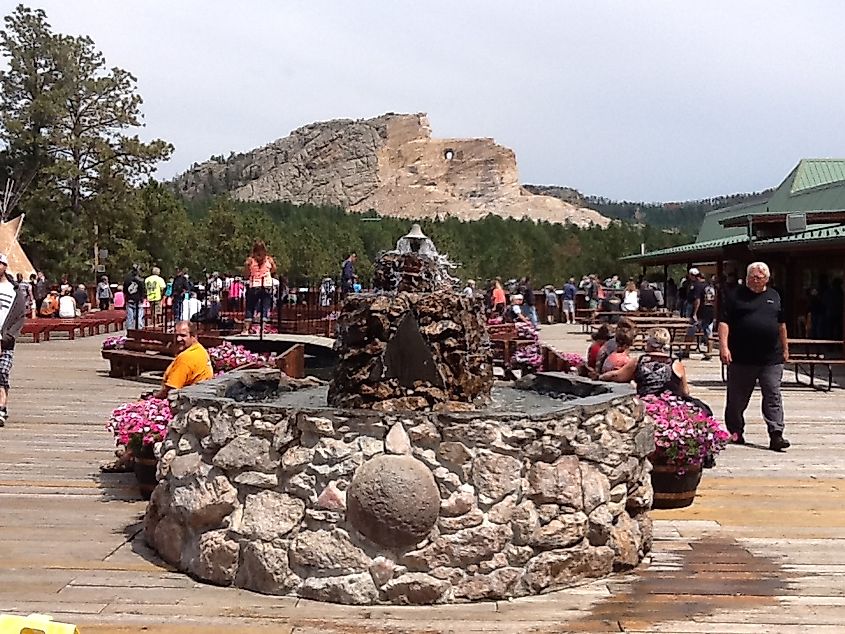
The Crazy Horse Memorial is more than just a mountain carving. It also includes a sprawling visitor complex designed to educate, celebrate, and support Native American culture. Visitors can explore:
-
The Indian Museum of North America: A rich collection of artifacts, photographs, and artwork from over 300 Native tribes.
-
The Native American Educational and Cultural Center: A space where Native artisans demonstrate traditional crafts, music, and storytelling.
-
The Indian University of North America: A partnership with Black Hills State University, offering summer programs for Native American students.
The entire complex supports the educational mission envisioned by Henry Standing Bear and the Ziolkowski family. Since its founding, the memorial has awarded over $1.2 million in scholarships, most going to Native students.
How It’s Funded
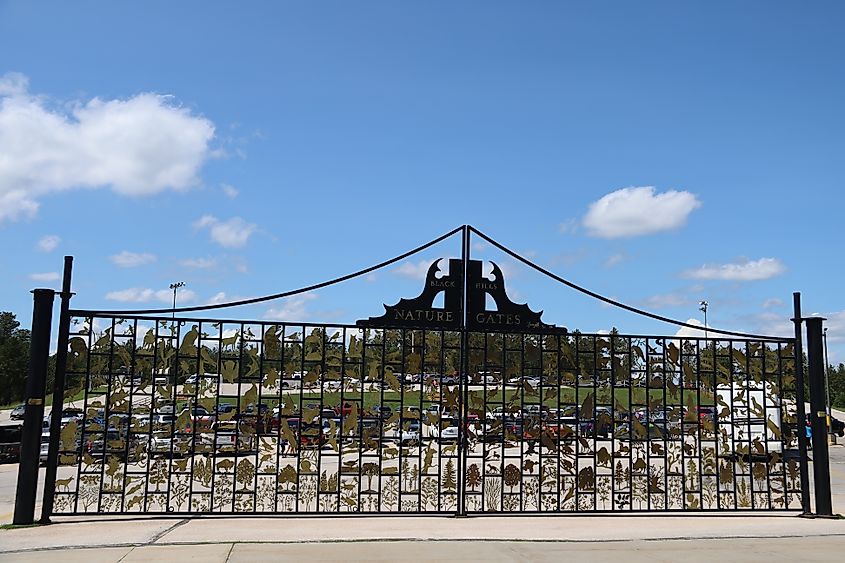
The Crazy Horse Memorial operates entirely without federal or state funding. This was a deliberate decision made by Korczak Ziolkowski, who wanted to avoid government interference in the project's direction and philosophy. Instead, the foundation relies on admission fees, gift shop revenue, and private donations.
Philanthropists like T. Denny Sanford and the Christen family have donated millions to support construction, education, and operations. As of 2024, the Crazy Horse Memorial Foundation had accumulated more than $128 million in assets and brings in over $14 million in annual revenue.
A Work in Progress
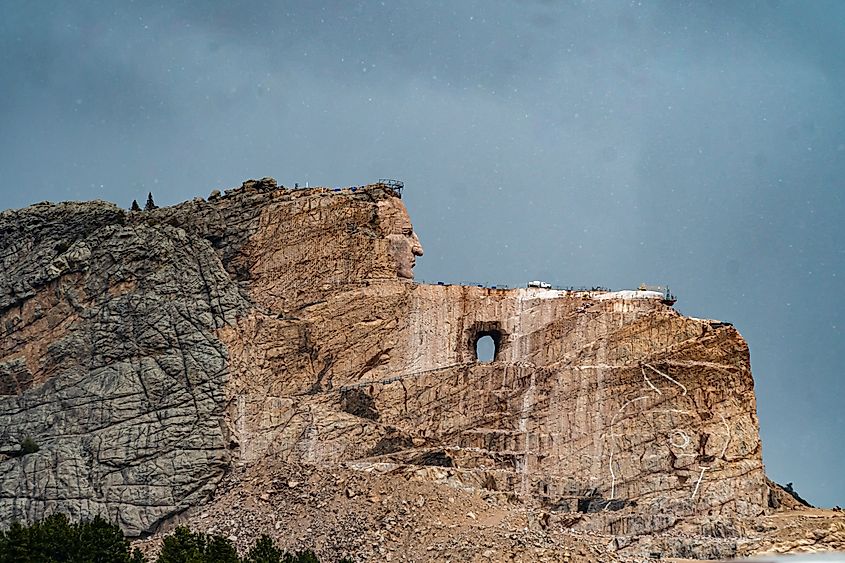
When work began in 1948, Korczak estimated it would take 30 years to finish the memorial. Today, more than 75 years later, there is still no definitive completion date. The engineering involved is incredibly complex, especially given the scale and ambition of the design.
Estimates suggest that major features such as the horse’s head, the rider’s shoulder, and more of the upper torso could be completed by the late 2030s. For those involved in the project, progress is measured in generations, not years.
Sacred Ground and Controversy
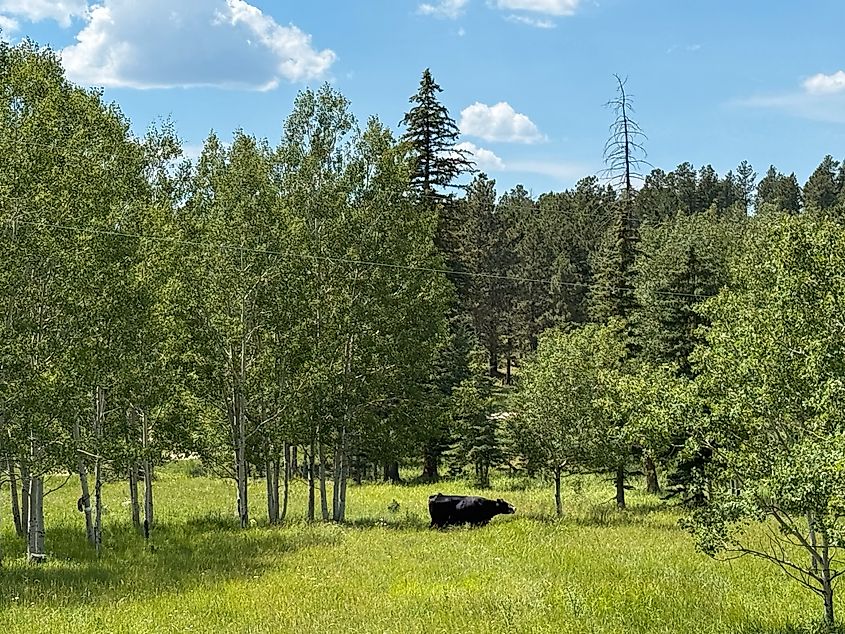
While the Crazy Horse Memorial is a source of pride for many, it is not without controversy. Some Native Americans believe the monument dishonors the legacy of Crazy Horse. He was known to resist being photographed, and his grave was hidden to prevent exploitation. To carve his image into sacred land feels, to some, like a violation of both his memory and Lakota traditions.
Critics within the Native community also question the use of his name to generate tourism revenue. Others feel the memorial does not accurately reflect Lakota values and was initiated without proper tribal consensus.
Despite these concerns, many Native leaders support the memorial and its mission. The educational programs, scholarships, and cultural exhibits offer tangible benefits to Native youth. For others, the monument serves as a powerful symbol of indigenous resilience and strength.
Visiting the Crazy Horse Memorial
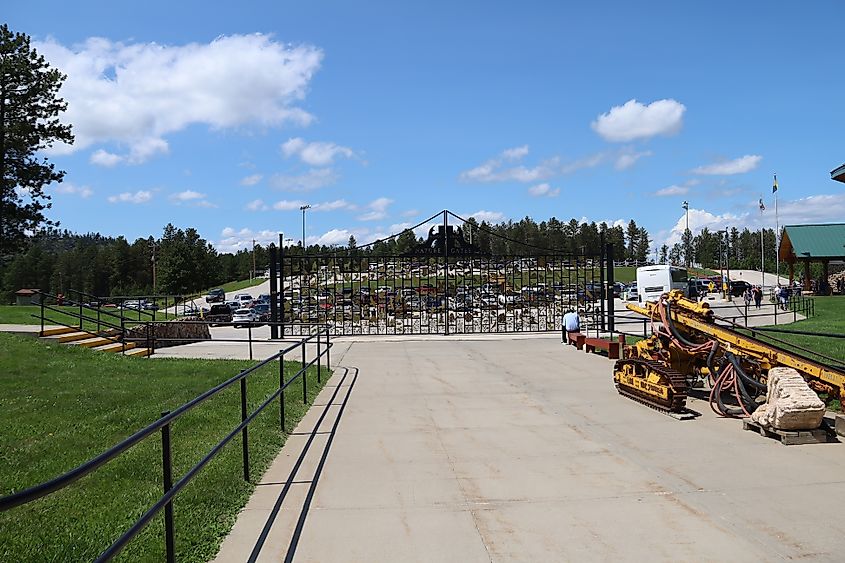
The Crazy Horse Memorial is located about 17 miles from Mount Rushmore and is open to visitors year-round. Highlights include:
-
Viewing the massive mountain carving up close
-
Touring the museum and cultural center
-
Meeting Native artists in residence
-
Attending special events like the Night Blast, which commemorates the June 3rd anniversary of the first explosion on the mountain
Each visit helps support continued work on the monument and the foundation’s educational mission.
A Monument to Endurance
The Crazy Horse Memorial is one of the most ambitious public art projects in the world. It honors not only a legendary warrior but also the spirit of a people who continue to fight for recognition, justice, and cultural preservation. Over 75 years into its construction, the monument stands as a reminder that some legacies are worth carving into stone, no matter how long it takes.